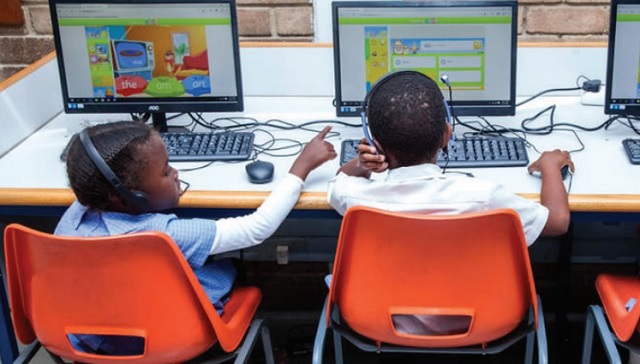
Marrying them in school boosts maths and science learning
Kampala, Uganda | MMAKI JANTJIES | Technology, like mobile apps and online learning platforms, is becoming an increasingly important teaching tool all over the world. That’s also true in emerging markets; accessible technologies can essentially be used to take information and digital resources into remote, rural and under-resourced schools.
But is this technology useful if it’s not also provided in diverse languages? In subjects like maths and science, pupils must have a certain level of competency to comprehend and effectively respond to tasks. Extensive research shows how important language is in helping pupils better understand concepts.
I set out to evaluate the role of language in mobile maths and science learning platforms like apps and websites. The aim was to enable pupils’ access to mobile learning resources for maths and science subjects. I also wanted to see whether providing this technology in pupils’ home languages would enhance their learning experience.
I found that providing the mobile teaching tools in multiple languages increased pupils’ engagement with their work. My research was done in South Africa where language use in schools remains a contentious issue.
I tracked the use of an app I’d developed that allowed children to switch between languages. My research showed that it helped children grasp maths and science concepts much quicker. This suggests that schools in the country should consider offering mobile learning technology in multiple languages to help pupils learn better in subjects like maths and science.
Testing an app
The study was conducted with teachers from urban, rural and peri-urban schools in South Africa’s economic hub, Gauteng, and the neighbouring North West province. More than 90 pupils were involved. The study was conducted over three years, and pupils’ and teachers’ experiences were evaluated several times.
Each school was able to use an adaptive mobile learning app, called Mobile Thuto (that’s the Setswana word for “learning”). The app provides text book resources, practice exercises, quizzes and teachers class notes for mathematics and science subjects for children in grades 10, 11 and 12.
I developed the app in collaboration with teachers and subject heads, allowing them to tailor the content to their teaching plan so they could practice blended learning. This refers to the combination of technology and traditional lessons as part of the teaching and learning process.
One of the app’s key features was the ability to support code-switching – the switch between two languages or more as a form of communication by bilingual or multilingual speakers. Code-switching can be used to enable a better understanding of concepts, especially where pupils have not been able to fully grasp the teaching language. For example, the app allows pupils to switch between English and Setswana content. Setswana and Sepedi were the most common home languages among the pupils we worked with.
The results
Once each phase of use of the app was finished, teachers were interviewed and, in a separate study, pupils were also asked about their experiences.
Some of the teachers said they didn’t feel confident using technology in their classrooms. They wanted to be trained to integrate technology into teaching and learning. Many reported that they thought of technology as an additional task rather than as something that could support their current work and resources.
Despite this, the teachers we worked with were enthusiastic about the app and about the idea of working more with technology. They enjoyed helping their pupils to interact with the tasks set out by the app, and wove these tasks into their lessons.
The teachers found it useful that the app was available in more than one language. This helped pupils who struggled with English.
In the second study, pupils said they valued being able to learn on the go through their mobile phones. They enjoyed having mobile phones integrated into classroom teaching and learning. Those in the urban school weren’t overly concerned with having another language option; they spoke English competently and also said English had more social capital than other languages.
Those in the rural and peri-urban schools, meanwhile, found it very helpful to be able to switch between Setswana and English to help them grasp tricky concepts.
Where to next
My findings reflect the need for both ongoing support and training for teacher technology education in schools. This will help them – and their pupils – to really benefit from technology in this digital era. It’s also a valuable way to equip pupils with basic computer literacy and the confidence to effectively use online and offline technology resources to learn.
And language must not be ignored as a crucial factor. If technology is to have a positive effect, inclusion is key. By offering pupils educational technology in their own languages, you’re also providing good context and boosting their learning.
Now that the research project is complete, I am developing material for a Massive Open Online Course for teachers. This will guide them through embedding open education technology in their lessons.
****
Mmaki Jantjies is Senior Lecturer, University of the Western Cape
 The Independent Uganda: You get the Truth we Pay the Price
The Independent Uganda: You get the Truth we Pay the Price



